Bodh Gaya
Bodhgaya in North Eastern India is the site of the Buddha’s enlightenment and the most important of four main Buddhist pilgrimage destinations. Known as Uruvela in the Buddha’s time, the city of Bodhgaya is now a town of about 30,000 permanent residents. The two major sacred sites are the Mahabodhi Mahavihara and the Bodhi Tree, around which many other temples and monasteries of various Buddhist traditions (Japanese, Tibetan, Bhutanese and others) have been built.
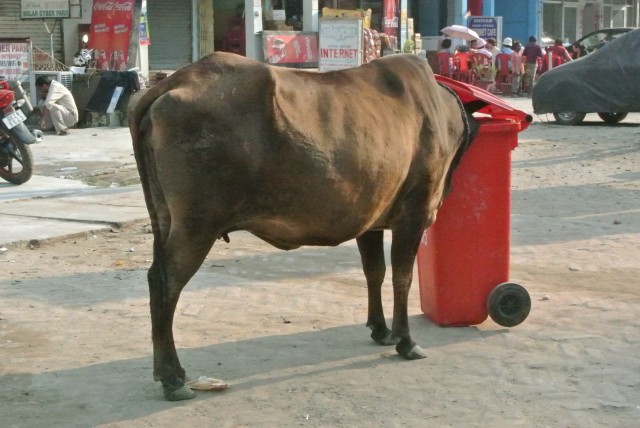
Urbanised buffalo roamed the street; adapted well to ‘junk’ food as grass is scarce in town.

Gateway to Mahabodhi Mahavihara.
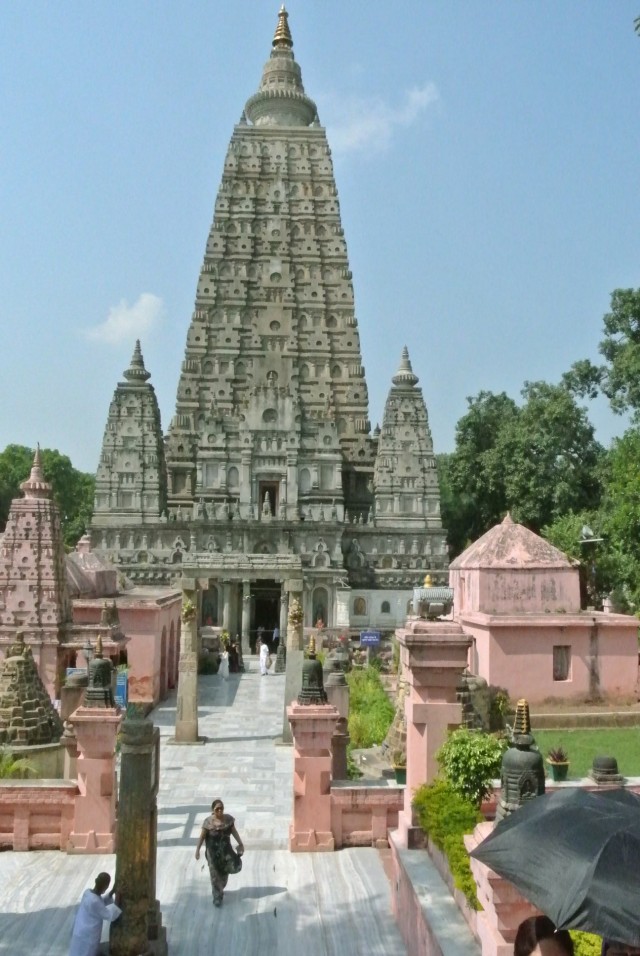
Inside the Mahabodhi Mahavihara.
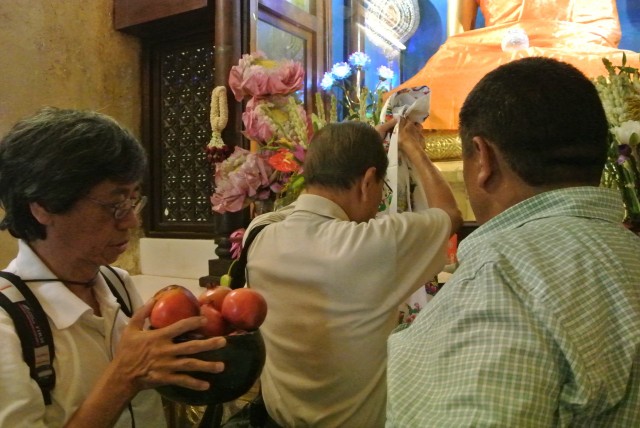
Offering of fruits and scarf at the Mahabodhi Mahavihara.

Paying homage to the Buddha at Mahabodhi Mahavihara.

Synopsis of the Sujata Stupa.
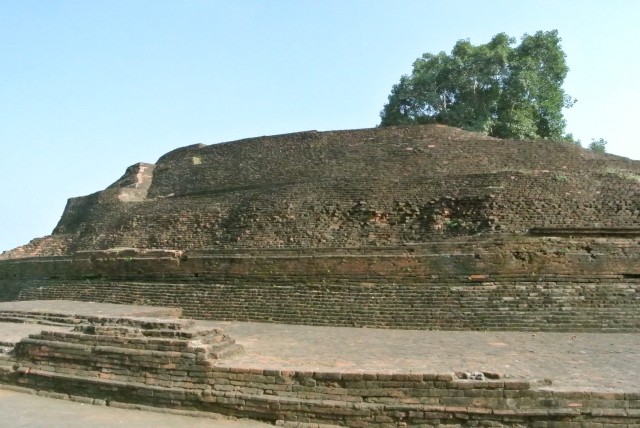
Ruins of Sujata Stupa.
The Enlightenment
At dawn on the very day of His Enlightenment, the Buddha uttered this paean of joy which widely describes His transcendental moral victory and His inner spiritual experience.
“I, who have been seeking the builder of this house (body), failing to attain Enlightenment (Bodhinana or Sabbannuta) which would enable me to find him, have wandered through innumerable births in samsara. To be born again and again is, indeed, dukkha!
Oh, house-builder! You are seen, you shall build no house (for me) again. All your rafters are broken, your roof-tree is destroyed. My mind has reached the Unconditioned (i.e. Nibbana); be end of craving (Arahatta Phala) has been attained.”
(Dhammapada XI (8) Udana Vatthu, Verse 153 & 154).

Prince Siddhartha attained Buddhahood (Enlightenment) in the year
623 B.C. on the Vaisakha full moon day under this Pipa (Bodhi) tree.
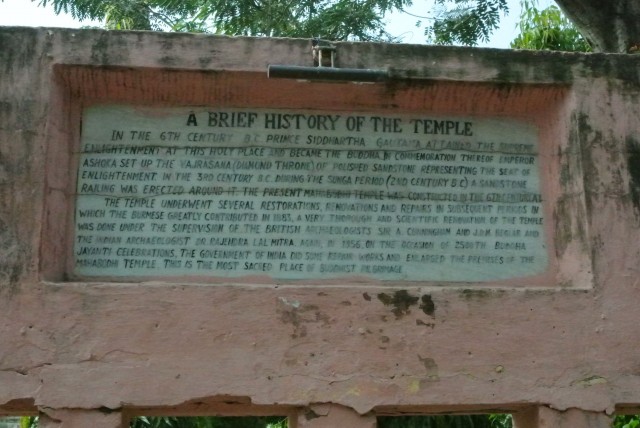
Signboard with synopsis of the Diamond Throne.
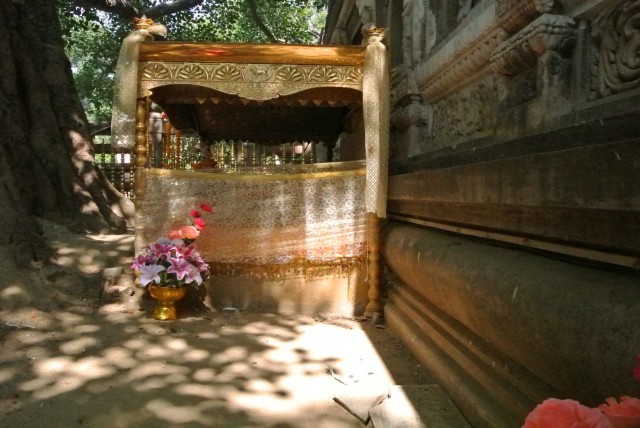
The Diamond Throne, the spot where Prince Siddhartha attained
Enlightenment and spent a week under the Bodhi tree.
The Seven Weeks after Enlightenment
For the whole of the First Week, He sat under the Bodhi tree in one posture experiencing the Bliss of Emancipation, vimuti sukha. At the end of the seven days, He emerged from the state of concentration.
During the first watch of the night of the Seventh day, He reflected upon the formulation of the Doctrine of Dependent of Origination.
During the second watch, Lord Buddha reflected upon the Dependent Origination in the reverse order.
During the third watch, Lord Buddha reflected upon the Dependent Origination in both direct and reverse order.
(Udana: 1.1 The Bodhi Tree (1) (Pathamabodi Sutta); 1.2 The Bodhi Tree (2) (Dutiyabodi Sutta) and 1.3 The Bodhi Tree (3) (Tatiyabodhi Sutta).
The Second Week saw the Buddha with silence and reverence, gazing at the Bodhi tree – the tree that had sheltered Him during His struggle to seek the Truth. He stood at a certain distance and with gratitude. He gazed it motionlessly (animisalochana) for one week.
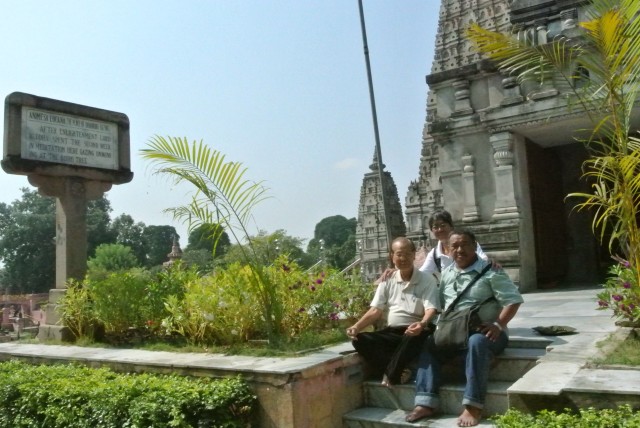
On the spot where the Buddha stood, King Asoka erected the Animisalocana Cetiya.
During the Third Week, the Devas doubted Lord Buddha’s attainment to Buddhahood. Using His psychic powers, created a jewelled ambulatory (ratana camkamana) and paced up and down for another week.
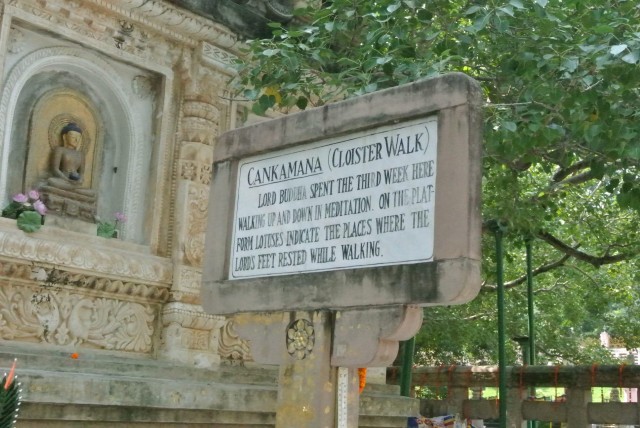
Site of the Jewelled Ambulatory

The platform lotuses indicate the steps where Lord Buddha
rested while pacing up and down in the Jewelled Ambulatory.
The Fourth Week He spent in the Jewelled Chamber (ratangahara) contemplating on the intricacies of the Abhidhamma (Higher Teaching). It was stated that His mind and body was so pure that when He pondered the Book of Revelations (Patthana), the seventh treaties of the Abhidhamma, six coloured rays emitted from His body.

Signboard at the site of Ratanaghara.

The site where the Jewelled Ambulatory was created.
“He left Bodhi tree on the Fifth Week and proceeded toward the Ajapala bayan tree , enjoyed the Bliss of Emancipation (vimutti skuha). When he rose from the transcendental state, a conceited Brahim approached Him and after customary salutations and friendly questioned Him thus: “In what respect, O Venerable Gotama, does one become a Brahmana and what are the conditions that make a Brahmana?”
“The Buddha uttered the third paean of joy in reply: “That brahmin who has discarded evil, without conceit, free from defilements, self-controlled, versed in knowledge and who has led a holy life rightly, would call himself a Brahmana. For him there is no elation anywhere in the world”.
(Udana, 1.4 The Bayan Tree (Nigrodha Sutta).
It was also this this week that the daughters of Mara – Tanha, Arati and Raga – made vain attempts to entice the Buddha by their charms.
From the Ajapala Banyan tree the Buddhand proceeded to the Mucalinda tree, where He spent the Sixth Week enjoying the Bliss of Emancipation. During the week an unexpected storm broke out. The serpent king Mucalinda came out from his abode and coiled round the body of the Buddha seven times, keeping his large hood over the head of the Buddha, sheltered Him from the cold winds and rain. At the end of the seven days and upon seeing the clear, cloudless sky, Mucalinda uncoiled himself and then appeared before the Buddha in the form of a young man. With clasped hands he stood before the Buddha who then uttered His fourth paean of joy:
“Happy is seclusion to him who is contented, to him whom has heard the truth, and to him who sees. Happy is goodwill in this world, and so is restraint towards all beings. Happy in this world is non-attachment, the passing beyond of sense desires. The suppression of the ‘I am’ conceit is indeed the highest happiness.”
(Udana, 2.1 Mucalinda (Mucalinda Sutta).
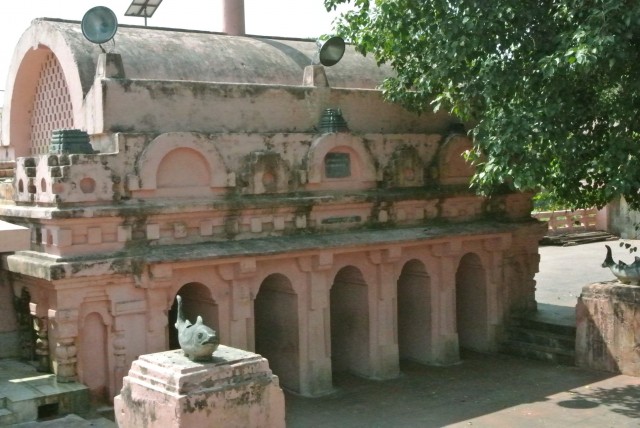
Gateway to entrance of Maculinda Lake.

Muclinda Lake, Abode of the Serpent King.
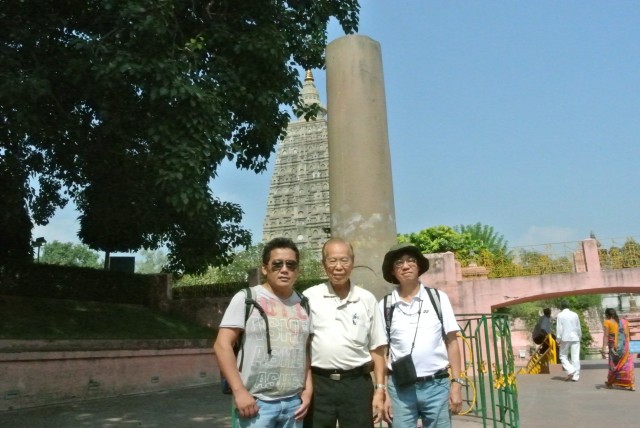
Asoka Pillar in front of the entrance gate way to Muclinda Lake.
The Seven Week the Buddha peacefully passed at the Rajayatana tree, experiencing the Bliss of Emancipation. As He sat there, two merchants named Tapassu and Bhallika from Ukkhala (Orissa) happened to pass by. A certain deity (Deva) who had been a blood relative of those two merchants during one of their previous lives hinted to them that an Enlightenment Being was sitting at the foot of the Rajayatana tree. They ought to serve the Buddha with flour and honey-comb as the gesture would ensure well-being and happiness for a long time. They performed as instructed and then sought refuge with the Buddha. By that very act they became the first two disciples who had sought refuge by reciting the two-fold formula – the Buddha and the Dhamma.
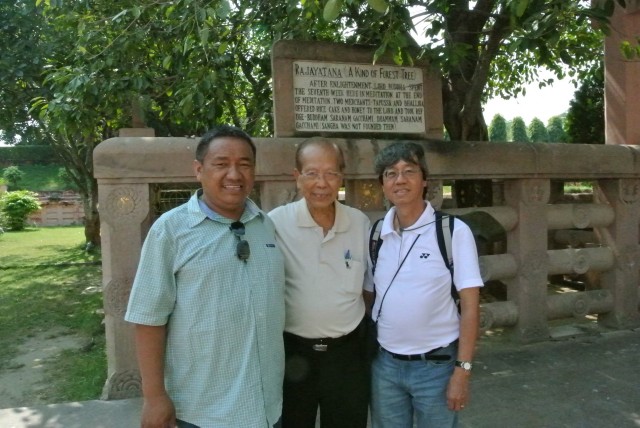
Group picture at Rajayatana.
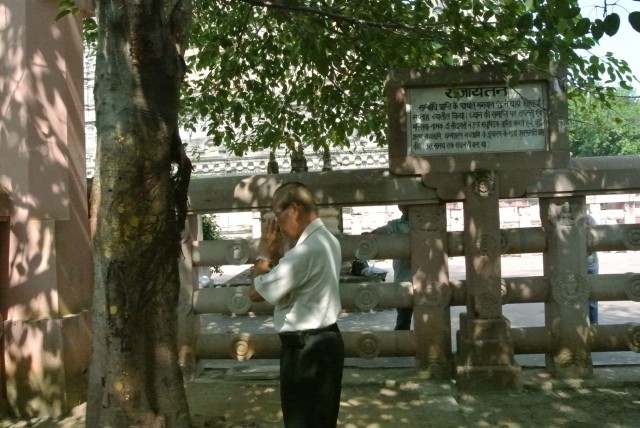
Paying respect to the Rajayatana tree where two merchants sought refuge from the Buddha.
Isipatana – Deer Park
Sarnath is the prime centre of Buddhism. As the capital of Buddhism, the place was renowned from the time Asoka who erected a series of monuments and t it continues to be leading centre of Buddhism throughout the centuries.
The ancient site of Isipatana presently known as Samath is in the District of Varanasi, Uttar Pradesh.
Samath is the place where Lord Buddha delivered his First Sermon, the act known as the turning of the Wheel of Law or Dhammacakkappavattana.

“Then the bhikkus of the group of five, thus taught and instructed by me,
being themselves subject to birth. Seeking the supreme security from bondage,
Nibbana, attained the unborn supreme security from bondage, Nibbana…..”
(Majjhima Nikaya, Sutta 26: Ariyapariyesana Sutta, The Noble Search).

Synopsis of Chauhandi Stupa
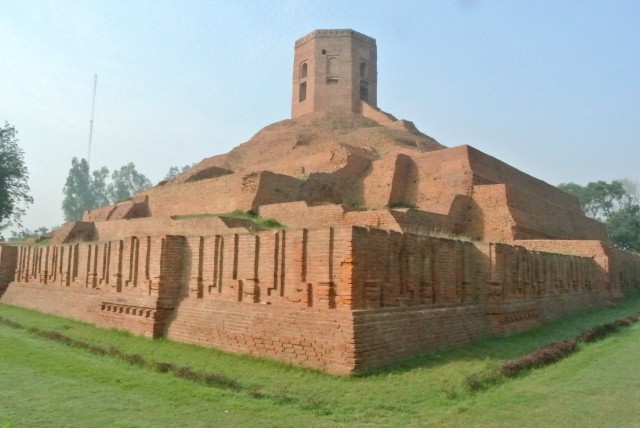
Chaukhandi, the site where the Buddha on his way from Gaya to Isipathana
met his five former comrades who were soon to become converts to his faith.
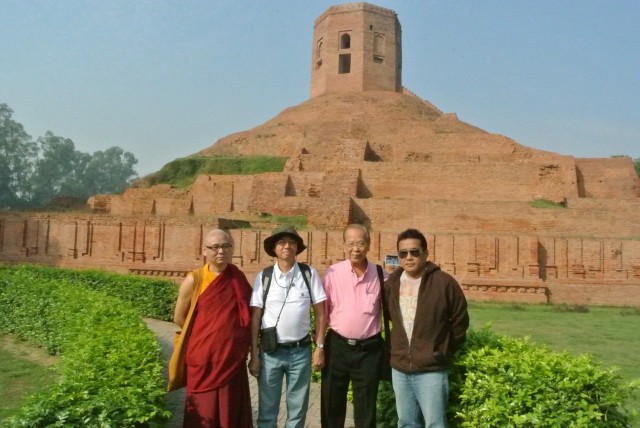
Posing with our guide Dr. Lobson Dorjee (Rabling).
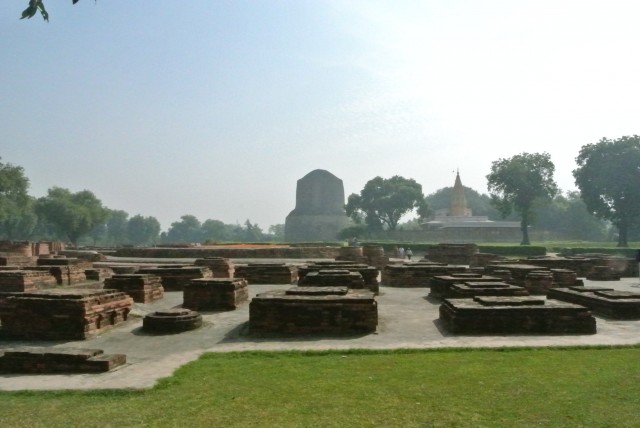
Ruins of an ancient site at Deer Park.

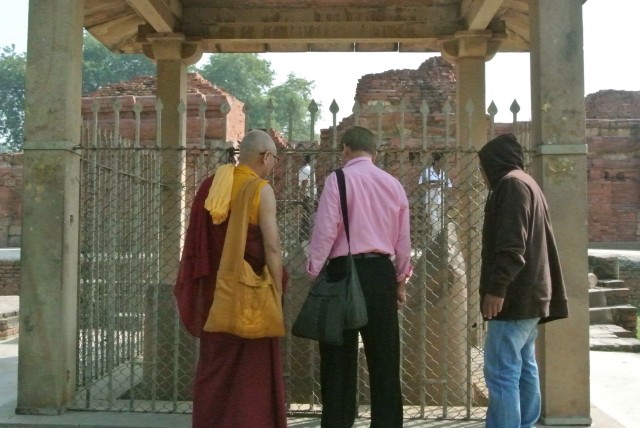
Viewing fragments of Ashokan Pillar in the enclosure.
The Dhamekh stupa was built by King Asoka to enshrine the relics of the Buddha.
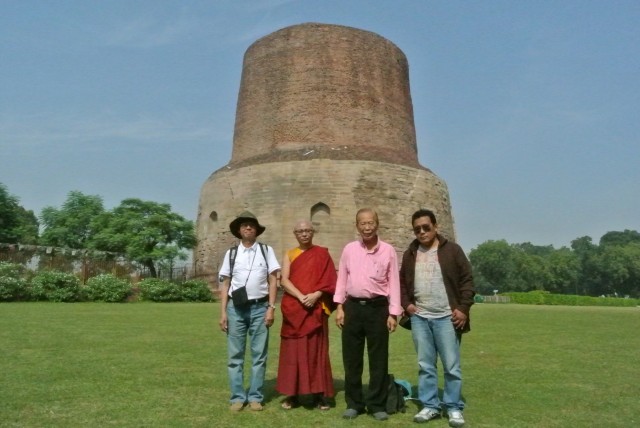
Group picture in front of the Dhamekh Stupa.

Close-up view of Dhamekh Stupa.
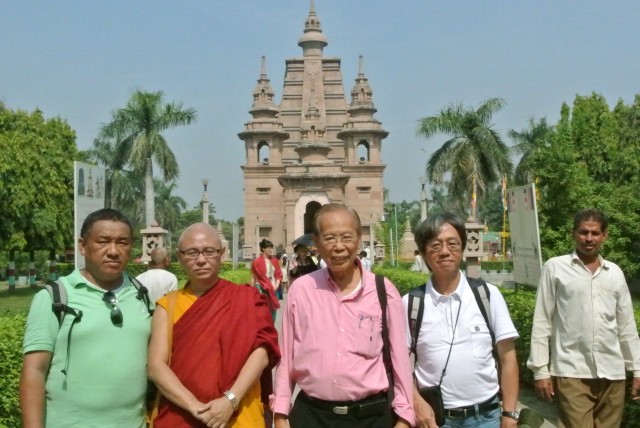
Group picture in front of Mulagamdha Kuti Vihara site – where
the Buddha spend His first vassa season.
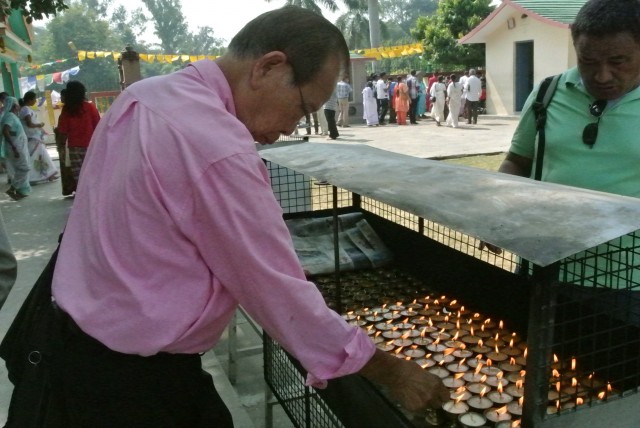
Offering of light at Deer Park.
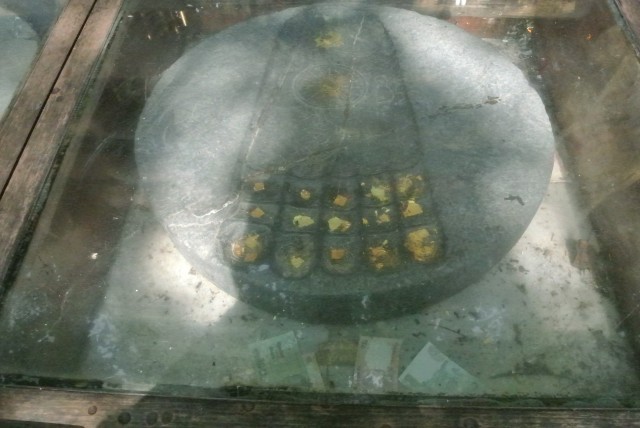
Foot print of the Buddha from Bodh Gaya.
“Ananda, there are four places for a faithful clansman to see which may be his inspiration. What are the four? Here the Perfect One was born; here the Perfect One discovered the supreme enlightenment; here the Perfect One set to rolling the matchless Wheel of the Dhamma; here the Perfect One attain final Nibbana.” (Digha Nijaya, Suttta 16: Mahaparinibbana Sutta, The Buddha’s Last Days).
Every Buddhist should inspire to visit the four sites.
We missed the opportunity to visit Kushinagar as we were unable to get accommodation. However, we will endeavour to make the trip in the future.
Contributor: Chin Kee Thou



